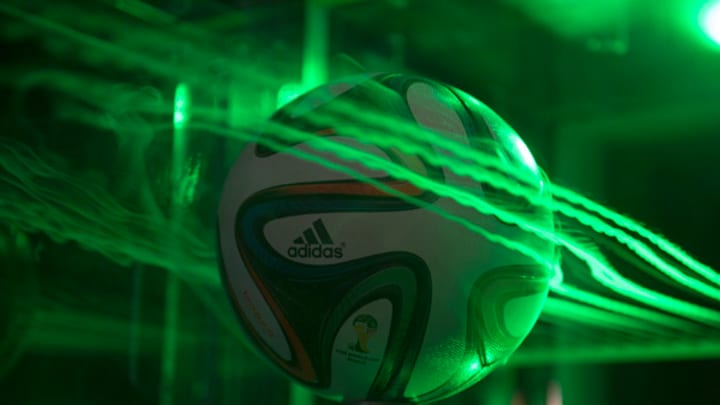2014 World Cup: The Science Behind Brazuca

If you watched the opening match of the 2014 World Cup yesterday, you probably noticed the ball. Called Brazuca and manufactured by Adidas, the official match ball of the tournament is different than your normal soccer ball. For one thing, it has a lot more color in it. But it's also designed with six panels to give it improved grip, touch, stability, and aerodynamics. (There's more about Brazucain our post about it from December.)
Brazuca was designed to address an issue players raised about the 2010 ball, Jubulani: Knuckling. When the ball was kicked the right way, it moved in really unpredictable ways. So in building the ball for the 2014 tournament, Adidas did a complete redesign and worked with players to make sure it met their needs.
Did it work? NASA decided to find out — and give fans a little insight into the science that rules soccer in the process.
"Sports provide a great opportunity to introduce the next generation of researcher to our field of aerodynamics by showing them something they can relate to," Rabi Mehta, chief of the Experimental Aero-Physics Branch at NASA's Ames Research Center in California, told the NASA website.
Engineers at Ames put Brazuca through a series of tests to see how it stacked up to Jubulani. They placed Bazuca in a 2-foot-by-2-foot wind tunnel, then blasted it with a flow of smoke illuminated with green lasers to make it more visible. Next, the researchers changed the speed of the smoke to see what happened when it hit the ball. This is a standard test in the field of aerodynamics, which is the science of how objects in space react to things like air and liquid.
What researchers discovered is that Brazuca's design (especially its six panels and rough surface) gave it better aerodynamics that made it knuckle at a lower speed than Jubulani, which made it more predictable once its kicked. “The players should be happier with the new ball," Mehta said. “It is more stable in flight and will handle more like a traditional 32-panel ball."
There's a ton more really cool info about the experiment on the NASA website. Definitely check it out before the next World Cup match. But if you'd rather just watch a video of the test, we have you covered:
Photo: NASA's Ames Research Center

